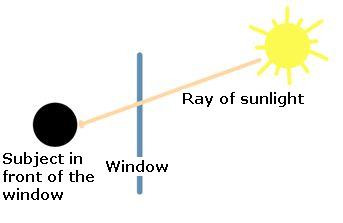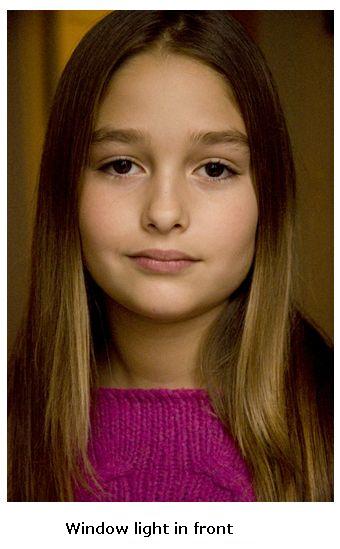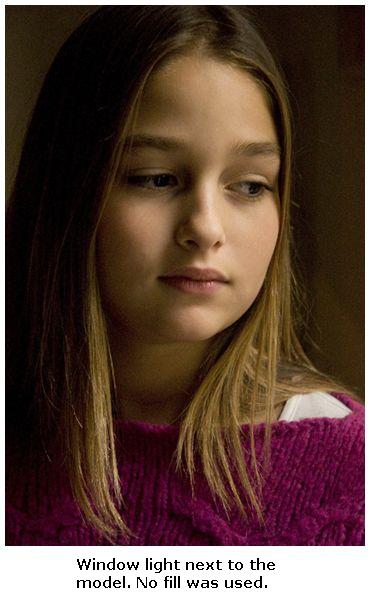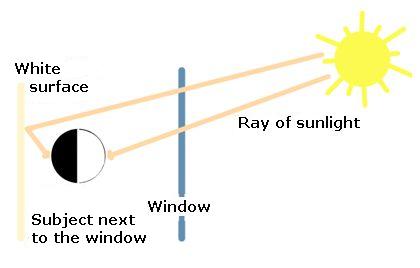Example 2
Now, let's imagine we are shooting a portrait inside a house. We will use the light coming in from a window to illuminate the model. First, we need to decide what type of illumination we want to use.
We can place the model looking towards the window for the light to reach her directly in front of her. When we illuminate the model from the front, there will be no shadows on her face and she will be illuminated evenly. This is a flat illumination. To take the picture, we need to place ourselves between the window and the model. Be careful not to cast an unwanted shadow on the model.


However, as I see the result, I realize this isn't what I want. I want something more dramatic; with some shadows in the picture. So, I decide to move the model next to the window. This way, she will be illuminated from her side; one side will be bright and the other side will have shadows. If after taking the picture I like the results, I make no further change to the light.

But today I'm feeling choosy. I think her shadows are too dark. What I need to do to brighten her shadows is to use direct reflection. I will place a white surface to reflect the light from the window. Where do I place this surface? I have to place it next to the dark side on her face (opposite to the window). The light from the window needs to reach this surface and reflect light upon the dark side of the model's face. Remember that this is something visible and you have to be able to see the changes. If you don't see any changes, then you need to reposition the surface until you do. The closer this surface is from her face, the more light will reach the model and thus, the brighter will the shadows become. Remember that you can use a white, silver, or golden surface depending on the result you want to achieve.


